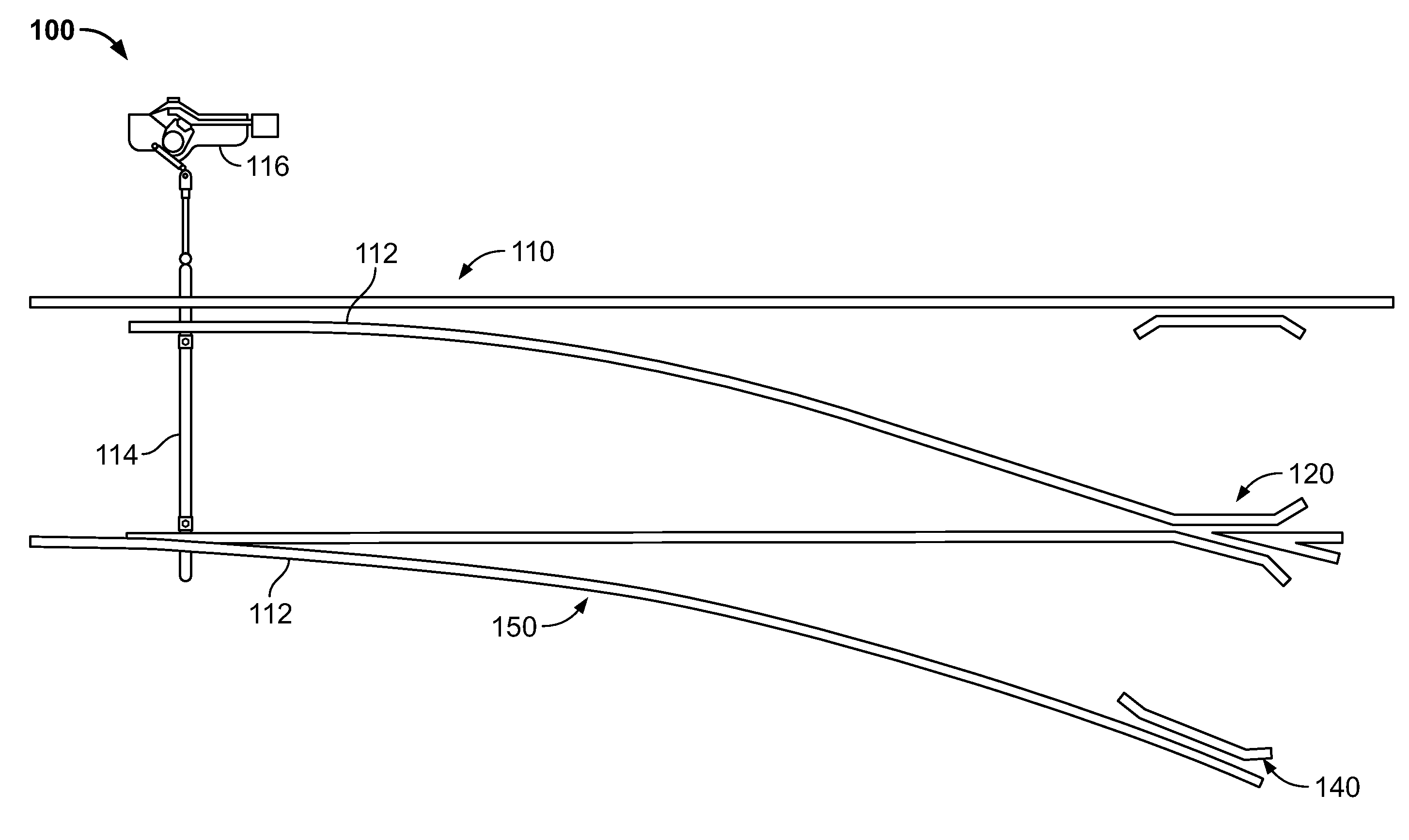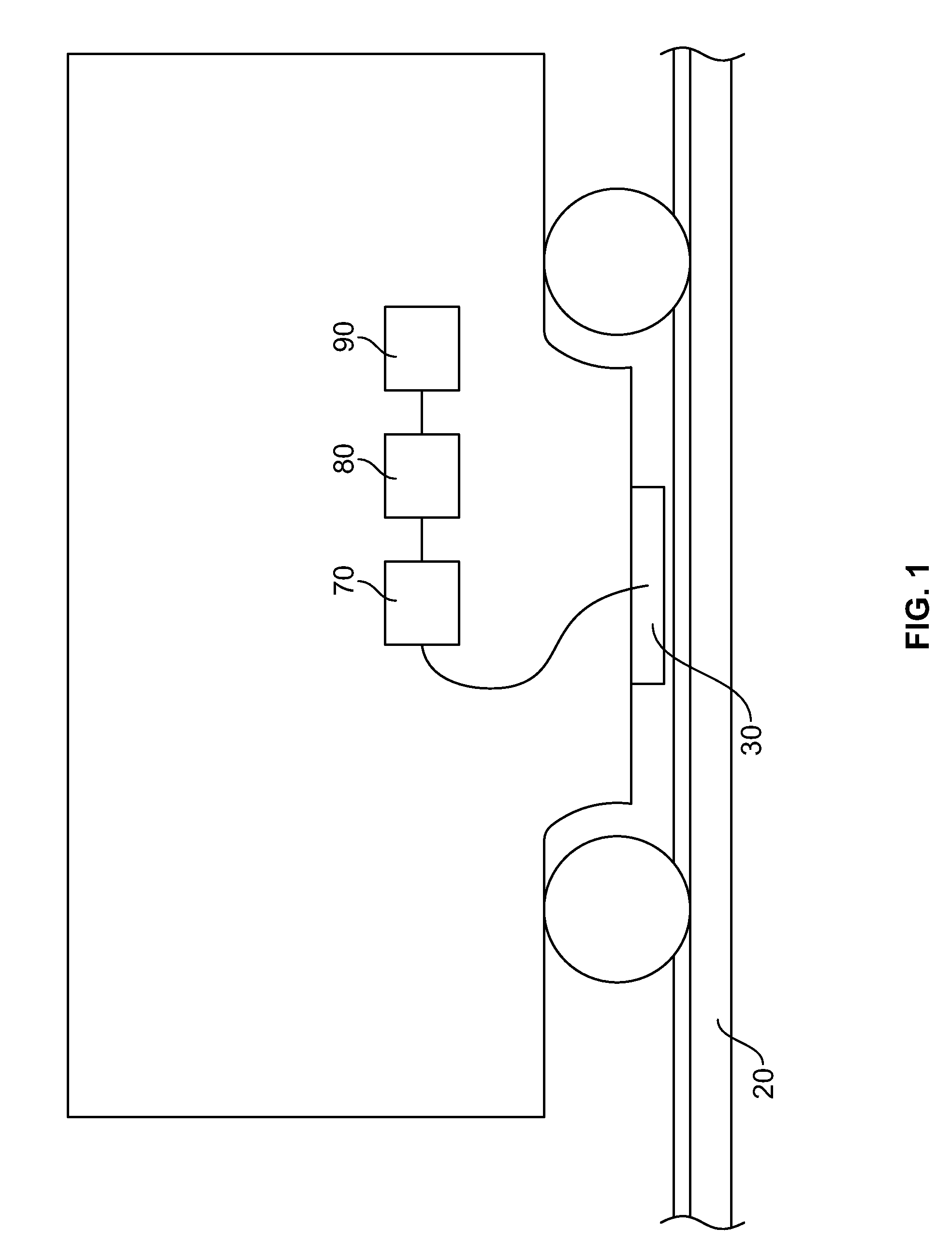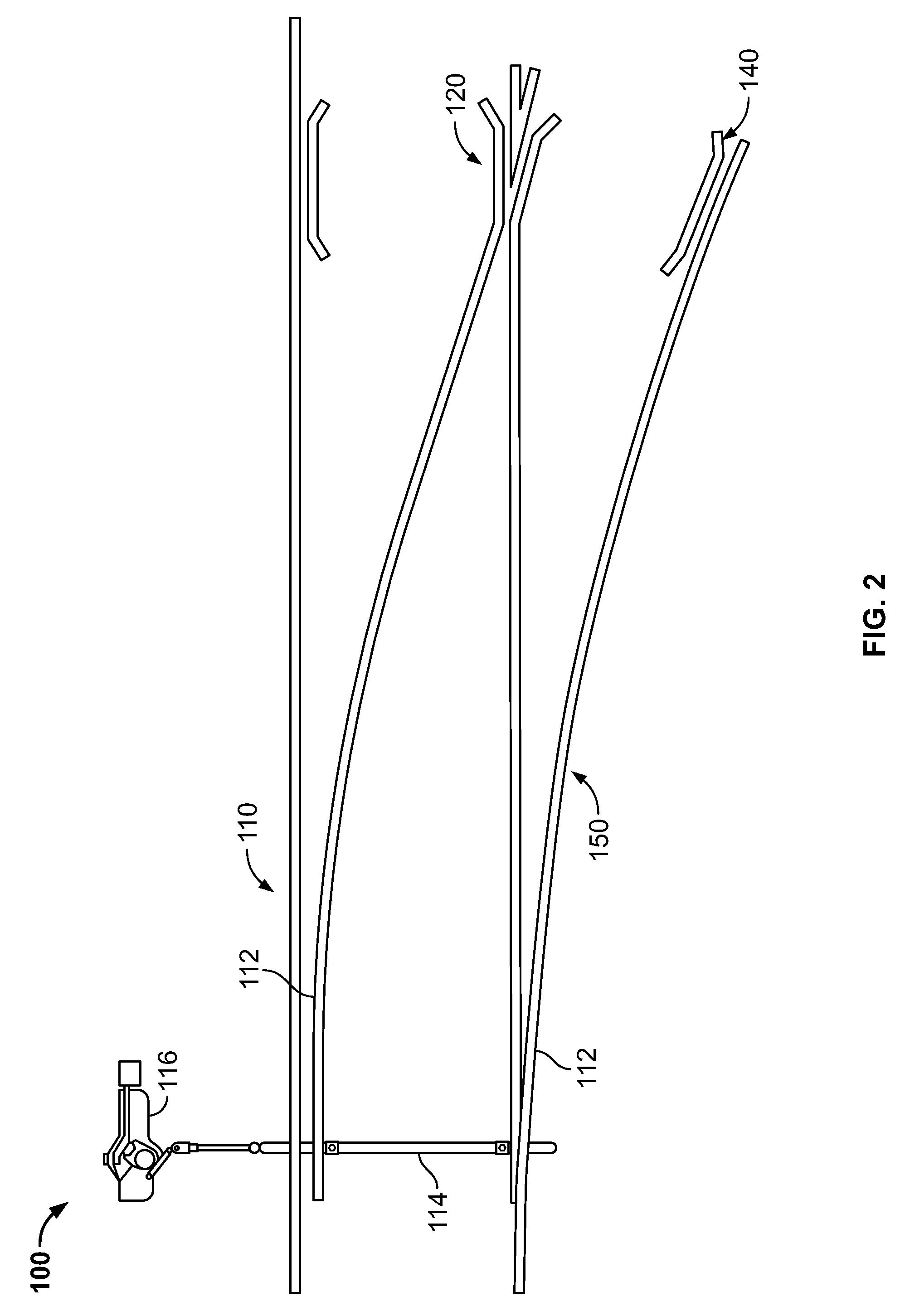Automated turnout inspection
a turnout inspection and automatic technology, applied in the direction of railway signalling and safety, instruments, computing, etc., can solve the problems of affecting the safety and reliability of rail transportation, the derailment of a train traveling on the track, and significant property damage and injury to passengers, crew and bystanders, so as to reduce the reliance on field measurements, enhance the turnout inspection approach, and frequent, comprehensive and convenient analysis of turnout condition
- Summary
- Abstract
- Description
- Claims
- Application Information
AI Technical Summary
Benefits of technology
Problems solved by technology
Method used
Image
Examples
Embodiment Construction
[0030]FIG. 1 shows an illustration of an inspection system 10 in accordance with one example embodiment of the present invention that facilitates inspection of rail components while traveling on the railroad track. As can be appreciated, only one side of a respective railroad track 20 is shown in FIG. 1. As will be evident from the discussion below, the inspection system 10 facilitates inspection of the rail portion of turnouts, which include, but are not limited to, the switch points, stock rails, frog and closure rails.
[0031]A turnout is a track device for diverting trains from the running track to other tracks. It represents an arrangement by which vehicles travel from one track to another. Two turnouts are used for the construction of a crossover. Turnouts, crossings, and other special track work are design “discontinuities” in the railroad track structure necessitated by the physical requirements for moving a rail vehicle from one track to another or for crossing tracks. They g...
PUM
 Login to View More
Login to View More Abstract
Description
Claims
Application Information
 Login to View More
Login to View More - R&D
- Intellectual Property
- Life Sciences
- Materials
- Tech Scout
- Unparalleled Data Quality
- Higher Quality Content
- 60% Fewer Hallucinations
Browse by: Latest US Patents, China's latest patents, Technical Efficacy Thesaurus, Application Domain, Technology Topic, Popular Technical Reports.
© 2025 PatSnap. All rights reserved.Legal|Privacy policy|Modern Slavery Act Transparency Statement|Sitemap|About US| Contact US: help@patsnap.com



